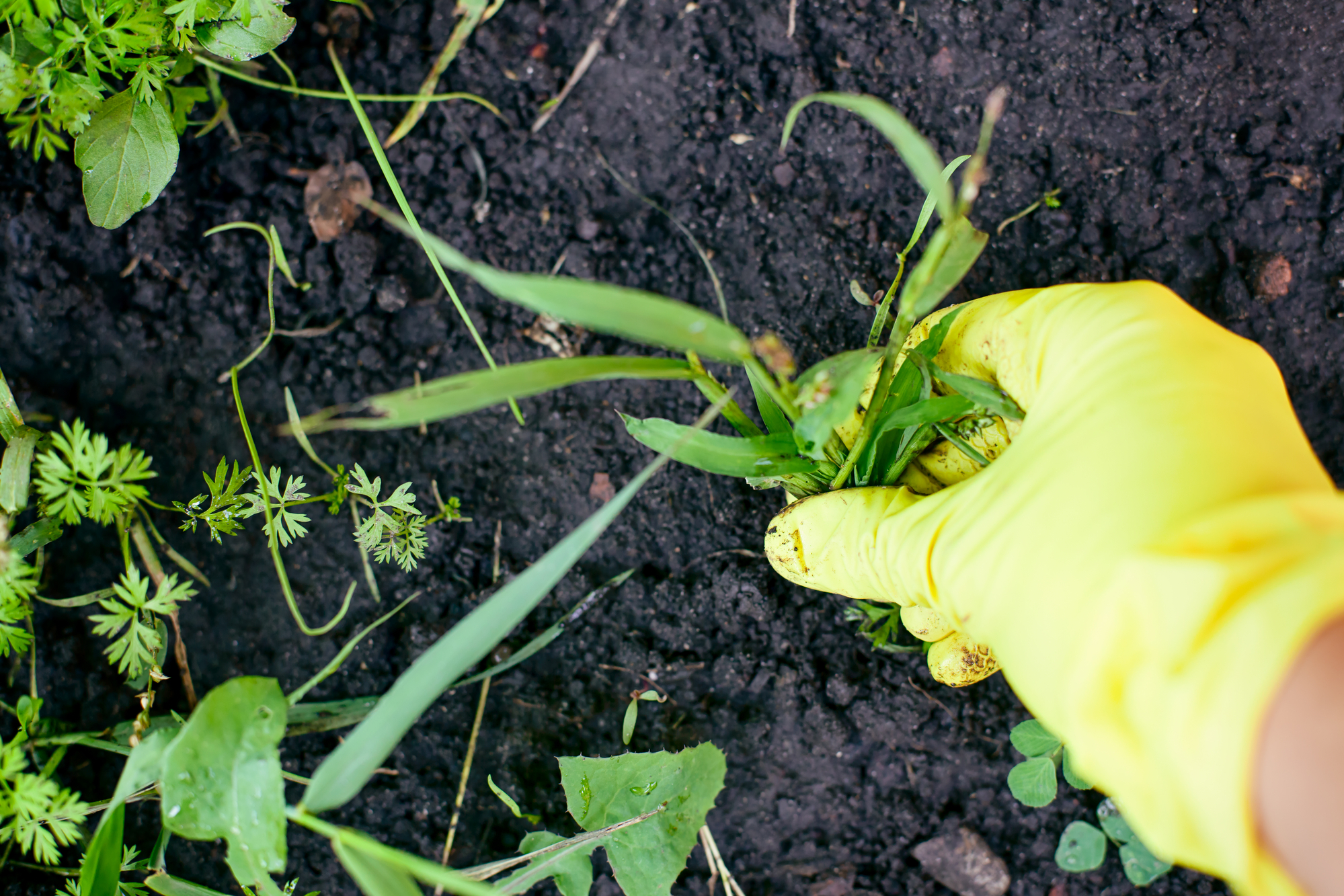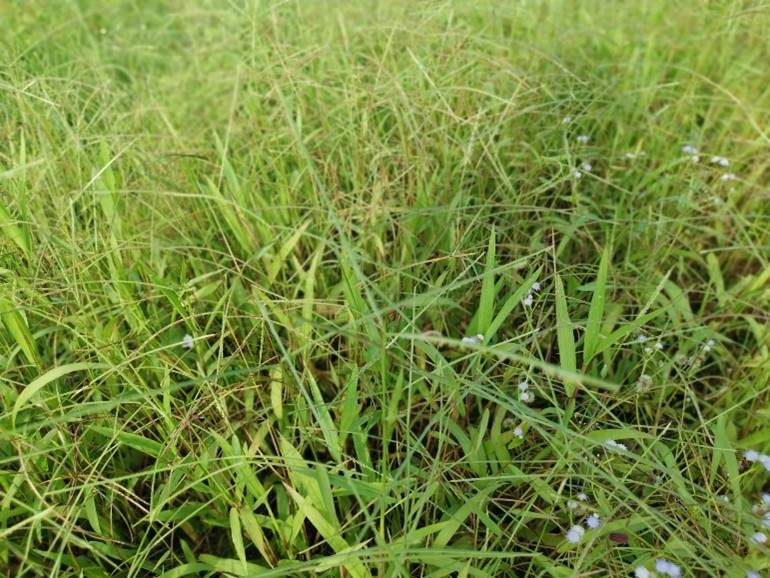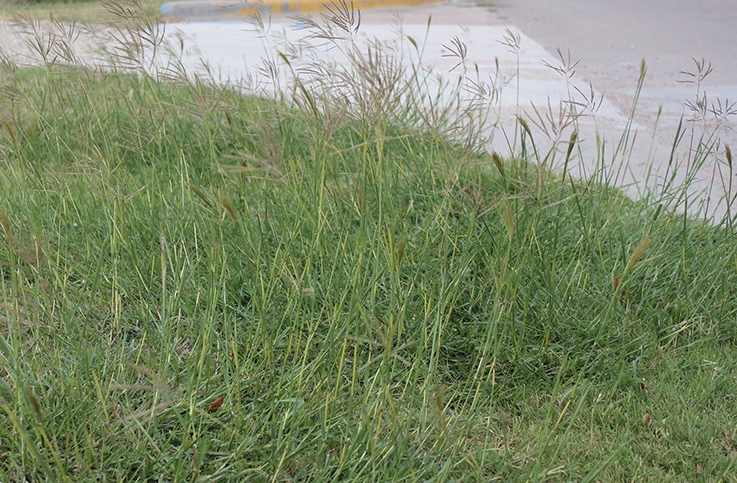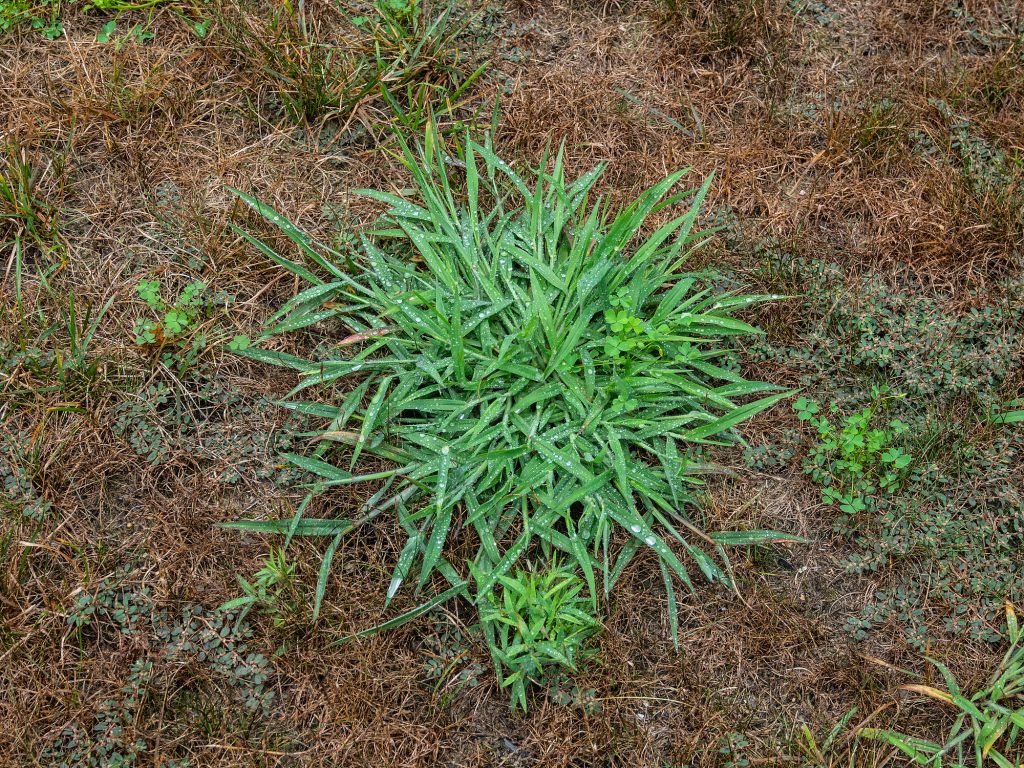
3 Grassy Summer Weeds to Look Out For
One thing about the warm Texas climate is that it makes for a great growth environment. There is generally plenty of rainfall most of the year, and the sunlight is always plentiful. This combination of nutrients available to Texas plants at all times means growth can be sudden and surprising. However, the bad comes with the good, as this great climate means all plant materials can thrive, including invasive species. This will especially happen during the summertime when drought conditions may present themselves, and rainfall will be less frequent. If your turf is already suffering from a lack of water or excess heat, it will be ripe for a weed takeover. However, MOST weeds can be easily prevented with preventative measures and proper identification. However, some require special selective post-emergent or manual removal. In this blog, we are going to focus on 3 grassy summer weeds you should look out for.

Dallisgrass
That’s right DALLIS, not DALLAS. The story goes that a farmer with the last name Dallis in Georgia thought it’d be a great idea to bring this grass to his farm from outside the USA for his cows. Well turns out it wasn’t a great grazing grass and it has spread all throughout our south and southwest region wreaking havoc on residential/commercial lawns and is one of the most difficult weeds to eradicate. Appearing on your property as a star-shaped clump of turf, Dallisgrass does best in warm temperatures and moist lawns.
Classified as a bunchgrass, it will develop a deep root system that resists any manual methods of removal like hand pulling and most herbicides. It will also be relatively large, with stems growing anywhere from 2 to 6 inches, and leaves anywhere from 4 to 10 inches. The seed stalks will be covered in fine hairs and black seed heads, which is a common theme among grassy weeds. Growth will be circular, outward from the center of the bunched-up grass. As it grows outward, it will kill off the turf it encounters. It grows faster than your primary turf and can quickly go to seed within 4-5 days after mowing which just further propagates and spreads itself. It does best in clay soils which is why it is so prevalent in our area.
Combination of pre-emergent control Pre-emergents do not control this perennial weed and is one of the toughest to eradicate with post-emergents. There is only one legal selective herbicide product we know of that kills it without harming your primary turf. Alternative options that are very effective and cheap are waiting until your primary turf is almost dormant and treating with Round-Up. This is a non-selective so it kills everything hence the reason we wait until your lawn is dormant as Dallis is more cold hardy it is usually active longer and has delayed dormancy if at all. In addition, a thick healthy lawn should generally help to keep it out along with good routine mowing practices but herbicide use by a professional may be necessary should it pop up.

King Ranch (KR) Bluestem
This is another bunchgrass, with the large difference being the tall vertical growth off the ground. In the wild, it can grow to be anywhere from 18-48 inches tall, although on your lawn it will be just a few inches. It has a perennial life cycle and spreads through belowground rhizomes and seeds. If your lawn lacks nutrients or possesses thin turf or in wide-open areas it will be a prime candidate for KR Bluestem. Like other grassy weeds, a thick seedhead can be found at the tip of the tall stems, which adds to the quick spread through self-seeding. Once again, pre-emergent control will not control this perennial weed very much at all requiring the need for special highly selective, and expensive post-emergents just like Dallis Grass. As always keeping up to date on necessary lawn maintenance should help keep KR Bluestem out of your lawn.

Crabgrass
With long blades that grow in clumps, crabgrass is one of the most common lawn offenders nationwide. It does well in the warmer months, which is why you might see it pop up in the summertime. As crabgrass does best with lots of light, dense turf can prevent spread, and some lawn services like aeration and dethatching can actually accentuate the problem. There are two common types of crabgrass; smooth and hairy, with both being considered annual weeds. What makes crabgrass dangerous is that it grows quickly, in any conditions, and thrives in the face of stress. With dense turf being the best defense, this is only realized through a comprehensive annual lawn program. The one good thing about Crabgrass is it is much easier to prevent as it is an annual, coming back from seed unlike Dallis/Bluestem which is perennials. Crabgrass is best controlled using quality, correctly mixed, and timely applied pre-emergents. Crabgrass starts to germinate when soil temps get warm enough usually around May in our North Texas region.
This is why at Higher Ground, we examine your soil, assess your lawn, and apply a variety of organic treatments to maintain health and keep away stressors. Crabgrass is one of the scariest grassy weeds, which is why we highly recommend working with a professional to keep it out of your lawn.
Higher Ground Lawn Care and Lighting are ready to take your property to a higher level. Experience why your neighbors and businesses in University Park, TX & surrounding areas choose Higher Ground Lawn Care & Lighting to bring their property to the next level. Give us a call at (682) 206-3596 or check out our website today.
Ready to get started?


